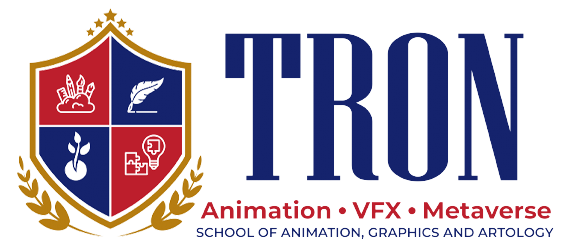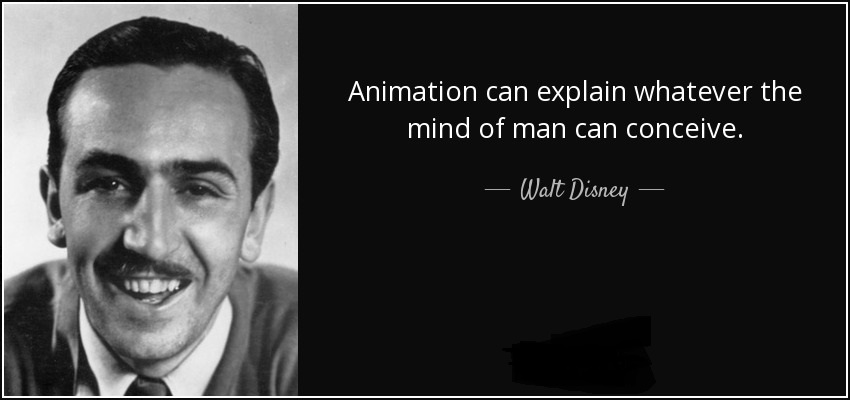Animation has a special place in presenting visual stories. Be it the story of Tom and Jerry fighting or Mickey Mouse roaming in his Clubhouse. Animators have successfully earned their respect for the art by entertaining, educating, and enchanting their audiences. Now, it’s your time to learn 2D and 3D animation.
Although it is easy to distinguish visually between 2D and 3D animation, the process of creation and software used vary significantly.
As an aspiring animator, it is crucial to understand the basic difference between 2D and 3D animation. So let us dive deep into 2D and 3D animation to understand how they both differ in the process of creation.
What is Animation?
At its roots, the animation is just like the “flip book” with similar drawings with small changes drawn on consecutive pages.
Upon flipping the book at speed, it gives the illusion of motion.
All types of Animation use the same concept of frames with a standard 24-frame designed for a one-second clip.
Different types of animations include
- Traditional animation
- 2D animation
- 3D animation
- Stop-motion animation
- Motion graphics
Now let us bring all our focus on 2D and 3D animation and how they differ from each other.
What is 2D Animation?
2D (or 2 Dimensional) Animation, as the name suggests, uses software with digital paper that has X-axis and Y-axis to draw different drawings. Each one of these drawings is called Frames.
An animator has to draw a standard of 24 frames for a one-second animation clip. These drawings need to follow basic physics and anatomy to reflect a natural movement.
Process of Creating 2D animation
The process of creating a 2D animation typically involves the following steps:
- Storyboarding: Storyboards typically include sketches of the key scenes and characters in the animation.
- Design: This involves creating the characters, backgrounds, and other visual elements for the animation.
- Animation: This involves creating the individual frames of the animation, which are typically created using digital drawing software.
- Sound design: This involves creating sound effects and recording dialogue for the animation.
- Editing: This involves assembling the individual frames and sound effects into a final animation.
Here is the list of some 2D animation software: Adobe Animate, Moho Pro 13, Toon Boom Harmony, OpenToonz, etc.
Famous Examples of 2D animation:
- Looney Tunes:- Bugs Bunny, Daffy Duck, Elmer Fudd
- Disney Cartoons:- Snow White, The Jungle Book, The Little Mermaid
- TV channel shows:- The Simpsons, Family Guy, South Park, Rick and Morty.
What is 3D Animation?
On the other hand, 3D (or 3-Dimensional) Animation is created in virtual spaces using advanced animation software.
Animators need to design every corner of the space in the background. They also create a virtual avatar of the characters from every possible angle. Once designed, their movement is created keeping in mind the science of motion, lighting, or various other factors.
Process of creating 3D animation
The process of creating a 3D animation typically involves the following steps:
- Modeling: This involves creating a 3D model of the object, character, or environment that will be animated. It is done using specialised 3D modeling software that allows artists to create and manipulate 3D objects using various tools such as extrusion, sculpting, and texturing.
- Rigging: Once the 3D model is created, it needs to be rigged, which is the process of adding a skeleton to the model and setting up controls that allow animators to manipulate the model’s movements and expressions.
- Animation: This involves creating keyframe animations or motion capture data that animate the 3D model’s movements and expressions.
- Lighting: This can include creating realistic lighting effects, such as shadows and reflections, that help to make the animation appear more lifelike.
- Texturing: This involves adding textures and materials to the 3D model to give it a more realistic appearance.
- Rendering: Once the animation is complete, it needs to be rendered, which is the process of converting the 3D model into a 2D image sequence that can be played back as a video file.
Here is the list of some 3D animation software: Maya, Blender, etc.
Famous Examples of 3D animation
- Pixar – Toy Story, Frozen, The Incredibles
- Dreamworks – Shrek, How to Train Your Dragon
- Feature Film CGI – The dinosaurs in Jurassic Park, Avatar
Difference Between 2D and 3D Animation

The foundation of both 2D and 3D animation remains the same. Both require understanding the principles of animation, physics, anatomy, lighting, etc. Other than this, the most crucial part of both these is storytelling and visual communication.
However, they both differ significantly in terms of process and training required. Let us look in detail at the key differences between 2D animation and 3D animation.
Properties | 2D Animation | 3D Animation |
Definition | 2D animation requires creating images on a two-dimensional plane and animating them to create the illusion of motion. | 3D animation refers to the creation of animations using three-dimensional computer graphics on advanced software. |
Techniques | Hand drawing or digitally creating images | Modeling, rigging and animation techniques |
Realism | Stylized, cartoonish look | Highly realistic, lifelike image. |
Movement | Limited | More fluid and natural |
Surfaces | Can be easily drawn on a flat surface | Cannot be drawn on a flat surface |
Depth | Lacks depth and volume | Creates the illusion of depth and volume |
Camera angles | Mostly fixed | Greater camera control |
Complexity | Less | More |
Flexibility | More in terms of style and visual design | Limited be the realism of the 3D models’ |
Interactivity | Less | More due to ability to manipulate objects in real-time. |
Difficulty | Drawing by hand takes longer and is more difficult. | Despite having higher expenses, the software may decrease the workload. |
Cost | Less expensive | More due to software and hardware required. (You can use Free 3D animation software i.e. Blender) |
Production time | Less compared to 3D | More due to the complex modeling and rendering process. |
Training required | Less compared to 3D | More due to complexity of software and techniques |
Skills | Storytelling, basics understanding of principles of animations, physics, and anatomy, Sketching/ Drawing skill. | Storytelling, a basic understanding of principles of animations, physics, and anatomy, Working with tools and technology. |
Job Opportunities | Work for movie producers, video production companies, or marketing firms. | 2D and 3D designers, modelers, animators, or game designers, etc, in studios or media houses. |
Salary | ₹ 1.0 Lakhs – ₹ 6.0 Lakhs (average ₹ 3.0 Lakhs), Animator Salary in India | ₹ 4.0 Lakhs – ₹ 9.6 Lakhs (average ₹ 6.0 Lakhs) |
After going through this table of differences between 2D and 3D Animation, you might be very clear about both 2D and 3D animation, and their differences.
Both the animation techniques offer the immense possibility of creativity and career opportunity. I hope this will help you understand the basics of 2D and 3D animation along with some major differences between both.
However, the question of which one is better or what to choose if one wants to learn still hangs open. Let us quickly discuss that too.
What should you learn, 2D or 3D animation?
Although it is said that individuals with an artistic nature prefer 2D, those with a mechanical mind frequently prefer 3D to 2D.
It comes down to what you find more enjoyable to work with or, rather, what your script or narrative requires.
It is more interpersonal than competitive because the audience is drawn to various styles in 2D and 3D animation, each of which has its own advantages. You will learn what you favour once you have tried both.
For a complete list of tools and curricula for animation, you can download the TRON brochure.
Career Opportunities in 2D and 3D animation
The animation industry market size is bound to grow up to $642.5 billion by 2030.
TRON School of Animation has trained thousands of students for jobs in the media & entertainment industry with their skills in Animation, Visual Effects, Gaming, Filmmaking, Multimedia, Web Design, Graphic Design, AR/VR, and more through our job-oriented courses.
Below are the listed career opportunities in 2D and 3D animation:
- Graphic design
- Illustrator
- VFX artist
- Web designer
- Games developer
- Animator
- Concept artist
- Game artist
Supplementary Reads: You will be clear about all the Career in Animation after reading this blog.
2D and 3D animation are both at boom nowadays.
There has never been a better time for aspiring animators to pursue a career in animation.
Kickstart your Animation career with Tron School of Animation with our highly experienced faculties and 21+ industry-ready short-term and long-term animation courses.
At TRON, our students work in a studio-like environment, practice industry-specific software, attend course-specific workshops, and participate in studio visits.
So, if you have a passion for animation, don’t hesitate to pursue your dreams and make the most of this industry’s exciting opportunities with TRON.
Enroll now by visiting our website Tron Education!
FAQs on 2D and 3D Animation
Which is better, 2D or 3D Animation?
Noone will be able to suggest you the best among 2D or 3D Animation. If you have interest in characters, modeling or if you are best at observation then go for 3D. If you are good at drawing, sketching then go for 2D. Nothing is harder if you love to do it.
Which is harder, 2D or 3D?
Comparatively, 2D is more complicated than 3D as there are about 24 drawings per second. By the proper use of tools, 2D and 3D both can be made easy.

